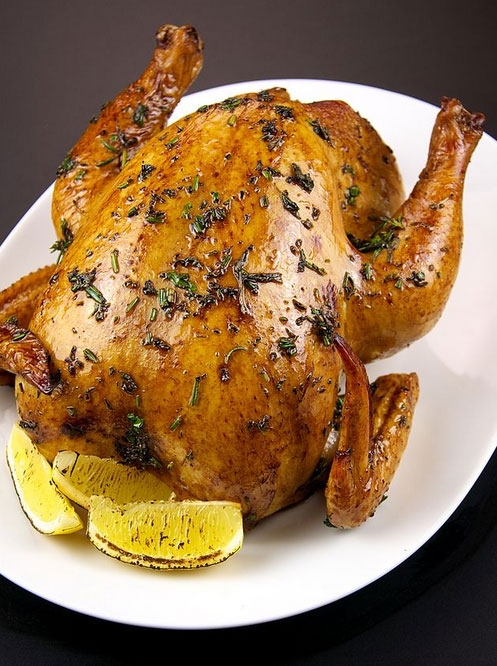UC Davis study identifies risky food safety practices in home kitchens
The study, which examined preparation of raw poultry, found that the most common risks stemmed from cross contamination and insufficient cooking.
“The most surprising aspect of these findings to me was the prevalence of undercooking,” said Christine Bruhn, director of the Center for Consumer research at UC Davis, who authored the study. “We are now in summer, the peak season for foodborne illness, and these results come at a time when more consumers can benefit from being aware of better food safety practices. Even tips usually considered basic, like washing hands with soap and water before and after handling raw poultry, and never rinsing raw poultry in the sink, still need to be emphasized for a safer experience,” added Bruhn, a specialist in UC Cooperative Extension who studies consumer attitudes and behaviors toward food safety.
Most risks can be avoided by practicing thorough hand-washing, never rinsing raw chicken in the sink and using calibrated thermometers to determine that chicken is fully cooked. Researchers say these results will help narrow areas of focus and define important messages for food safety educators and advocates in their mission to promote safe food preparation.
The study analyzed video footage taken of 120 participants preparing a self-selected chicken dish and salad in their home kitchens. The participants were experienced in chicken preparation, with 85 percent serving chicken dishes in their home weekly, and 84 percent reporting being knowledgeable about food safety; 48 percent indicated they had received formal food safety training.
Cross contamination was of specific concern to researchers:
- Most participants, 65 percent, did not wash their hands before starting meal preparation and 38 percent did not wash their hands after touching raw chicken.
- Only 10 percent of participants washed their hands for the recommended duration of 20 seconds and about one-third of the washing occasions used water only, without soap.
- Nearly 50 percent of participants were observed washing their chicken in the sink prior to preparation, a practice that is not recommended as it leads to spreading bacteria over multiple surfaces in the kitchen. See the U.S. Department of Agriculture website: http://1.usa.gov/1licv0U.
Insufficient cooking was also observed:
- Forty percent of participants undercooked their chicken, regardless of preparation method and only 29 percent knew the correct USDA recommended temperature of 165 degrees Fahrenheit.
- Researchers observed that cooking thermometers were not widely used, with only 48 percent of participants owning one, and 69 percent of those reporting that they seldom use it to check if chicken is completely cooked. Most participants determined “fully cooked” based on appearance, an unreliable method according to the USDA. No participants reported calibrating their thermometers to ensure accuracy.
Based on the study's findings, a coalition of agriculture and food safety partners, including the California Department of Food and Agriculture, UC Davis, the California Poultry Federation, the Oregon Department of Agriculture, the Washington State Department of Agriculture, the Northwest Chicken Council, Partnership for Food Safety Education, and Foster Farms, are launching an educational campaign to increase consumer knowledge about safe food preparation practices in the home. The study was funded by contributions from Foster Farms.
“We all have an important role in ensuring food safety and preventing foodborne illness,” said Shelley Feist, executive director of the nonprofit Partnership for Food Safety Education. “Dr. Bruhn's research shows that some home food safety practices need to be reinforced with consumers. Proper hand-washing and the consistent use of thermometers are basic preventive actions that need to be part of all home food handling and preparation.”
California agriculture officials and representatives have been vocal in recent weeks about salmonella control at the ranch level.
“The California poultry industry has made great strides in reducing salmonella on raw chicken,” said Karen Ross, secretary of the California Department of Food and Agriculture. “However, even at this lower level, consumers still need to practice safe handling and cooking of raw poultry.” \
Ross recently recorded a public service announcement calling for more attention to safe handling and cooking for raw poultry and meats.
“The poultry industry takes its responsibility to produce a safe product very seriously, as evidenced by current food safety programs that are drastically reducing the incidence of salmonella,” said Bill Mattos, president of the California Poultry Federation. “At the same time, the research indicates that the consumer recognizes they also have a role in ensuring safety. This research provides a great opportunity to educate consumers with the most helpful information and tools to minimize risk and gives us a clear picture of what behaviors to focus on.”
The study's complete findings will be published in the September/October issue of Food Protection Trends. Consumers can find free downloadable information on home food safety at http://www.fightbac.org.

